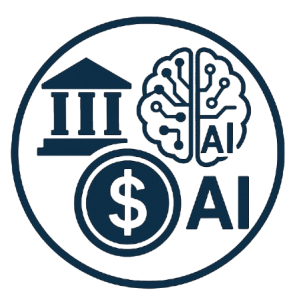Macro vs. Micro: Understanding the Two Sides of Economics
Economics, as a discipline, seeks to understand how societies allocate scarce resources. However, the study of economics is vast and complex, encompassing everything from individual consumer choices to national inflation rates. To better manage this complexity, economists divide the field into two main branches: macroeconomics and microeconomics. While both deal with economic principles, they differ significantly in their scope, focus, and analytical tools. Understanding these differences is crucial for anyone seeking to grasp the complexities of the modern economy and its impact on their lives. This article will delve into the core distinctions between these two vital areas of economic study, illuminating their separate roles and their interconnected nature.
Scope and Focus: Individual vs. Aggregate
The most fundamental difference between macroeconomics and microeconomics lies in their scope. Microeconomics, as the name suggests, focuses on the “micro” level of the economy. It examines the behavior of individual economic agents, such as consumers, businesses, and workers. Microeconomists analyze how these individual actors make decisions in response to changes in prices, incentives, and other economic variables. For instance, a microeconomist might study how a consumer decides how much to spend on a particular product, or how a firm determines the optimal level of production to maximize profits. Key topics within microeconomics include supply and demand, market structures (like monopolies and oligopolies), consumer behavior, and the theory of the firm. The goal is to understand how these individual decisions contribute to the overall allocation of resources in specific markets. It’s about understanding the pieces of the puzzle.
Macroeconomics, on the other hand, takes a “macro” perspective, looking at the economy as a whole. It focuses on aggregate variables, such as national income, unemployment, inflation, and economic growth. Macroeconomists are concerned with understanding the factors that determine the overall level of economic activity in a country or region. They develop models and theories to explain phenomena like recessions, booms, and long-term trends in economic growth. Key macroeconomic topics include monetary policy, fiscal policy, international trade, and exchange rates. While microeconomics analyzes the decisions of individual firms, macroeconomics examines things like how government spending impacts the entire nation.
Different Objectives: Efficiency vs. Stability
Another key difference between macroeconomics and microeconomics lies in their primary objectives. Microeconomics is largely concerned with efficiency. It aims to understand how resources can be allocated in the most efficient manner, ensuring that goods and services are produced and distributed in a way that maximizes societal welfare. This involves analyzing market failures, such as externalities and information asymmetry, and developing policies to correct these failures. For example, microeconomists might study the impact of pollution on society and propose policies, such as taxes or regulations, to reduce pollution and improve environmental quality. They delve into topics like how monopolies reduce societal welfare and suggest government policies to address those issues. The core aim is to enhance efficiency in the resource allocation.
Macroeconomics, conversely, is primarily concerned with economic stability and growth. Macroeconomists aim to understand the factors that contribute to fluctuations in the overall level of economic activity and to develop policies that can stabilize the economy and promote sustainable growth. This involves managing inflation, reducing unemployment, and stimulating economic growth during recessions. Macroeconomists use tools such as monetary policy (adjusting interest rates and the money supply) and fiscal policy (adjusting government spending and taxes) to achieve these goals. For example, during a recession, a government might increase spending on infrastructure projects to stimulate demand and create jobs. See more about Japanese cuisine in our travel blog, it might help understand spending habits.
Analytical Tools and Methodologies
The analytical tools and methodologies used in macroeconomics and microeconomics also differ to some extent. While both rely on mathematical models and statistical analysis, they often employ different types of models and focus on different types of data. Microeconomics often uses partial equilibrium models, which analyze the equilibrium in a single market, holding other markets constant. These models are often based on the assumptions of rational behavior and perfect competition. Econometrics also plays a vital role, using statistical analysis to estimate relationships between economic variables.
Macroeconomics, on the other hand, often uses general equilibrium models, which analyze the interactions between different markets and sectors of the economy. These models often incorporate more complex assumptions, such as expectations and imperfect information. Macroeconomists rely heavily on aggregate data, such as GDP, inflation rates, and unemployment figures. Time series analysis, which analyzes data collected over time, is a common tool in macroeconomics. Both branches of economics are heavily data-driven, however the focus changes according to the size of data and the variables of interest.
Interdependence and the Importance of Both
Despite their differences, macroeconomics and microeconomics are not entirely separate disciplines. In fact, they are highly interdependent. Macroeconomic phenomena are ultimately the result of the aggregated decisions of individual economic agents, and microeconomic behavior is often influenced by macroeconomic conditions. For example, the level of unemployment affects consumer spending decisions, and government policies designed to stimulate economic growth can impact the profitability of individual businesses.
Understanding both macroeconomics and microeconomics is essential for policymakers, business leaders, and anyone seeking to make informed decisions about their own economic lives. Macroeconomics provides the framework for understanding the overall economic environment, while microeconomics provides the tools for analyzing individual markets and industries. By integrating these two perspectives, we can gain a more complete and nuanced understanding of the complex workings of the modern economy. They offer different lenses through which the economic landscape can be viewed, and a holistic understanding requires considering both.












